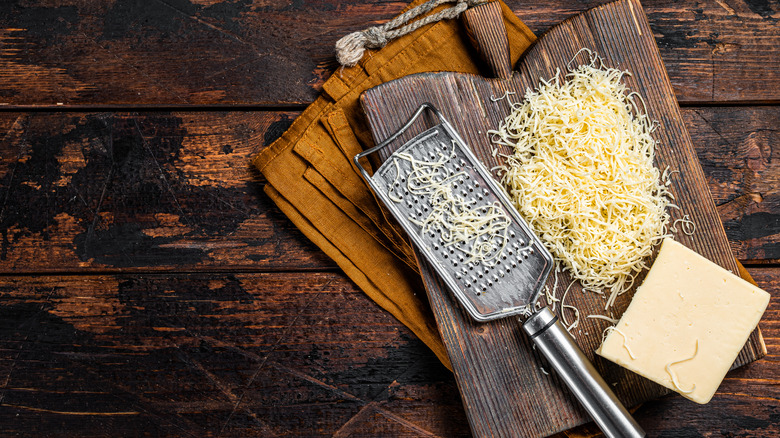Ina Garten Adds A Sharp Cheese To Her Creamy Corn Chowder
Corn chowder recipes always start with a very mild foundation: potatoes, corn, yellow onions, half and half, or heavy cream. Like many chowders, it's the finishing touches that keep you coming back to the bowl for more. The Barefoot Contessa's corn chowder recipe relies on an important addition right at the end of its cooking time — half a pound of grated, sharp white cheddar cheese.
The sharp, salty cheddar flavor cuts through the creamy base, adding complexity to the entire dish. Without its zip and brightness, you might be reaching for the salt shaker or wondering where you've gone wrong. "Cheddar cheese thickens the soup and gives it great flavor," Garten shares as she makes the recipe on Food Network's Facebook page. Before taking her soup off the heat, Garten lets the cheese melt for about five minutes. After she dishes it up she adds chopped bits of crispy bacon, though another sprinkle of cheese and a few green onions wouldn't be amiss.
What is sharp white cheddar cheese anyway?
There are many flavors (and colors) of cheddar on the market, but sharpness is the key differentiator in terms of taste. Most brands offer a range of products from mild to sharp to extra sharp (although some take sharpness even further). A sharp cheddar cheese has simply been aged longer. The longer a cheese ages, the more strongly it tastes like itself. That's why mild cheddars taste more muted. They've only aged for a few months so flavor-wise they're sometimes closer to butter than to a strong cheese.
Extra sharp cheddar cheese, on the other hand, is usually aged for close to a year so it has time to develop a flavorful funk. Sharp cheddar cheese is a great down-the-middle option for most recipes like the Barefoot Contessa's. It has enough flavor to cut through a heavy dish but not too much to overpower it. Still, if you love a bold cheese, give extra sharp cheddar a try.
You may be surprised to learn that there is no flavor differentiation between white cheddar and yellow-orange cheddar, as long as they're the same sharpness. There's also no difference in how they're produced. Traditionally and still to this day, a flavorless orange color is purposefully added to indicate where a cheese was made. That's why you'll often see white cheddars from Vermont or elsewhere in New England, as that cheesemaking region usually opts to keep cheddar's natural pale color.

